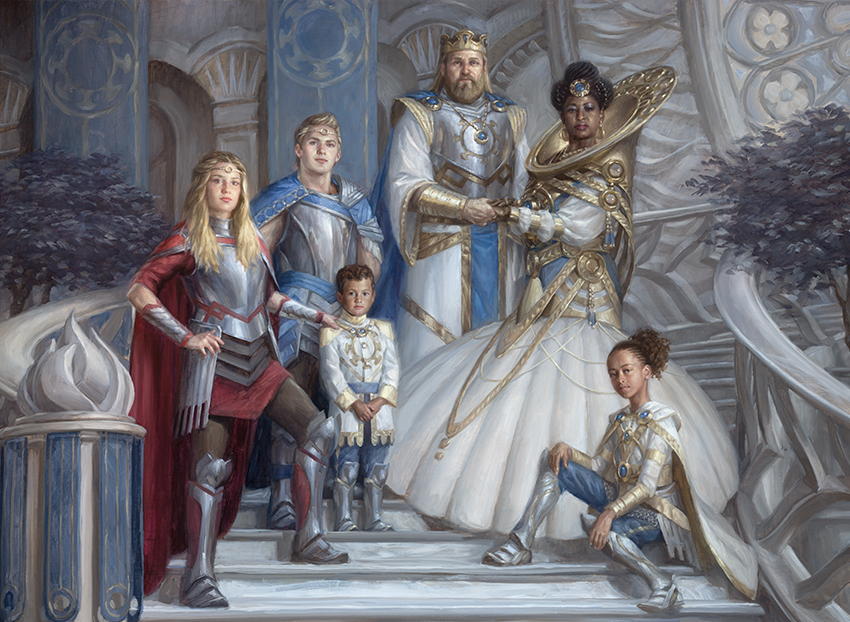SMOOSH JUICE
Schemes, Secrets, and Subterfuge: How to Build a Killer Political Intrigue Campaign in D&D

Schemes, Secrets, and Subterfuge: How to Build a Killer Political Intrigue Campaign in D&D
Looking to run a Dungeons & Dragons campaign where daggers are drawn in back rooms instead of back alleys? Where alliances shift with a whisper, and the fate of a kingdom hangs not on a sword,

but on a signature? Then it’s time to dive into the dark and delicious world of political intrigue.
Political campaigns offer rich storytelling, deep character development, and morally gray choices that linger long after the session ends. But they also require a different kind of prep than your typical dungeon crawl. So how do you do it right?
Here are the essential steps to building a truly gripping political intrigue campaign:
1. Establish the Power Structure
Before the players get involved, you need to know who’s in charge, who wants to be, and what’s keeping it all from collapsing.
Define key institutions and factions, such as:
-
A monarchy with a failing heir
-
A corrupt merchant guild pulling the strings
-
A shadowy church influencing public policy
-
Rebel movements seeking justice—or power
Create a political map of how these groups interact. Are they allies, rivals, secret lovers? Use triangles of tension—A hates B, but B needs A to keep C in check.
Tip: Treat your factions like characters. Give them goals, flaws, secrets, and evolving relationships.
2. Create a Cast of Scheming NPCs
A political campaign lives and dies on its NPCs. Your players need to meet people they love, fear, respect, and desperately want to outmaneuver.
For each major faction, design:
-
A figurehead (king, archbishop, guildmaster)
-
A ruthless second-in-command
-
A wild card with unclear loyalties
Include NPCs with layers—a noble who funds an orphanage but also assassinates rivals; a priest who believes in peace but starts a war to force it. Every character should have something to hide.
Bonus: Give each NPC a “tell”—a nervous tic, a catchphrase, a habit—so players remember them.
3. Hook the Players With Personal Stakes
Political drama means very little if the party doesn’t care. So tie the intrigue to the players themselves.
Ideas to personalize the stakes:
-
One PC is the secret heir to a fallen throne.
-
A player’s hometown is caught in the middle of a rising rebellion.
-
A patron or mentor is implicated in a scandal or coup.
Ask your players up front if they want political ties—titles, noble blood, blackmail leverage, or even just old enemies in high places. Make their connections matter.
4. Introduce Secrets, Scandals & Shadow Games
You’re not just building a government—you’re building a house of cards.
-
Include hidden agendas in every alliance.
-
Make documents and gossip as valuable as gold.
-
Let spies and informants play both sides.
-
Add magical twists—truth spells used for trials, forbidden divination, memory-altering agents.
The key to intrigue is letting your players dig. Put clues in coded letters, suspicious deaths, and intercepted communications. Let them investigate, eavesdrop, bribe, and blackmail.
5. Make Choices Matter
Political campaigns thrive when choices have consequences. If the party supports one faction over another, things should change:
-
New laws pass or riots erupt.
-
Powerful NPCs are elevated—or eliminated.
-
The balance of power shifts visibly.
Give the players multiple ways to solve a problem: legal maneuvering, public manipulation, assassination, seduction, or sheer audacity. Let them be diplomats, rebels, or kingmakers.
6. Layer the Threats

It’s not just about thrones and treaties. Spice up the intrigue with multiple threat vectors:
-
An ancient cult manipulating nobles behind the scenes
-
A foreign power using spies to destabilize the region
-
A demon or fey lord offering Faustian bargains to desperate power players
Your game can be part Game of Thrones, part House of Cards, and part Lovecraftian horror. Just make sure your players never know which way the knife is coming from.
7. Pace the Drama Like a Thriller
Political campaigns don’t need to be slow. Treat each arc like a season of a prestige TV show:
-
Episode 1–3: Introduce factions, characters, early tensions
-
Episode 4–7: Unravel secrets, force the party to pick sides
-
Episode 8–10: Crisis point—war, scandal, revolution
-
Final Arc: Endgame maneuvering and hard-won victory (or disaster)
Use downtime, montages, and time skips to keep the story moving between debates and disasters.
8. Give Them Power, and Watch What They Do With It
Eventually, your party will rise. Let them win seats on councils, inherit estates, command armies, or even become the rulers they once plotted against. Then show them how hard it is to hold on to power in a world of lies and legacy.
A great political campaign ends with the players changing the world—or being changed by it.
Final Thoughts
Political intrigue campaigns are rich with story potential, endlessly re-playable, and full of opportunities for cleverness, betrayal, and unexpected heroism. With the right prep and the right players, you can run a campaign that feels like The West Wing, Succession, Dune, and The Witcher all rolled into one—and all running on D20s.
Ready to start scheming? Let us know what political themes you’d love to explore at your table—or if you want help crafting noble houses, NPCs, or intrigue mechanics for your campaign!
Your crown awaits, Dungeon Master. Long may you reign.
Thanks for reading. Until Next Time, Stay Nerdy!!
